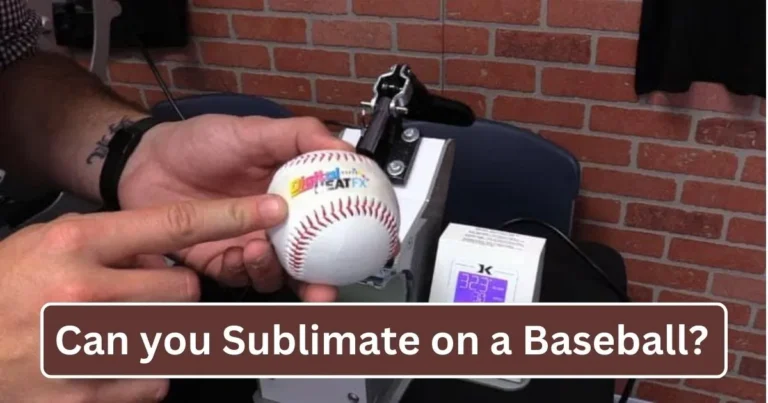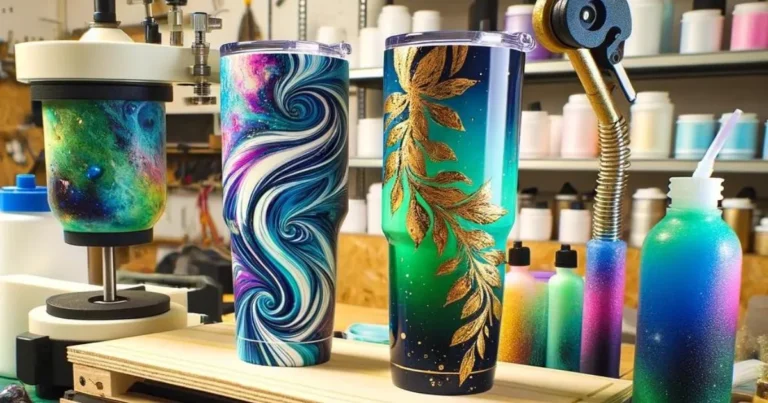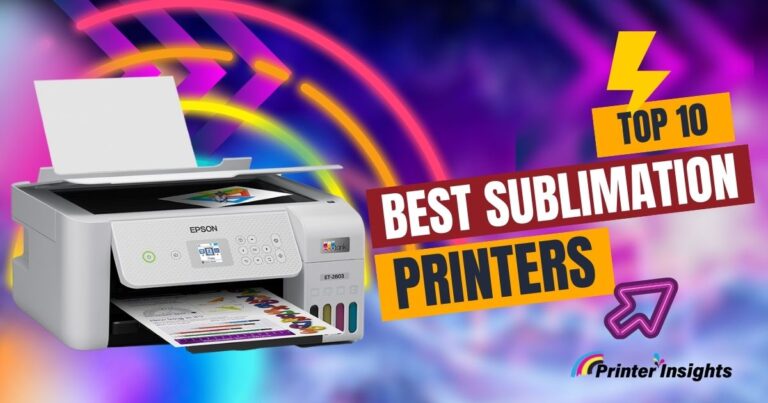What Can I Use Instead of Heat Tape for Sublimation
Do you want to know what can i use instead of heat tape for sublimation? All of the information you require is provided. Read on.

In sublimation projects, heat tape ensures designs transfer accurately. But what if you run out or need alternatives? This article aims to answer “What can I use instead of heat tape for sublimation?” by offering immediate solutions like high-temperature masking tape, reusable silicone strips, and magnetic clamps. Each alternative has specific applications and benefits that we’ll explore in the following sections. Continue reading as we dive into the world of sublimation! Are you ready? Let’s get started!
Key Takeaways:
- Heat tape secures transfer paper during sublimation, preventing shifts for precise designs but can cause yellow marks due to adhesive reactions.
- High-temperature masking tape, reusable silicone strips, and magnetic clamps offer effective substitutes. Each option suits different sublimation needs without leaving residue or causing discoloration.
- Select alternatives based on project specifics—masking tape for mugs, silicone strips for eco-friendly options, and magnetic clamps for seamless patterns.
- Bulk purchasing of non-branded tapes and DIY adhesive solutions can save costs while maintaining quality in sublimation projects.
- Optimizing workflow through pre-cutting materials and organizing workspace enhances efficiency. Safety precautions, like using appropriate materials and handling high temperatures carefully, are essential in the sublimation process.
Understanding Heat Tape and Sublimation Printing:
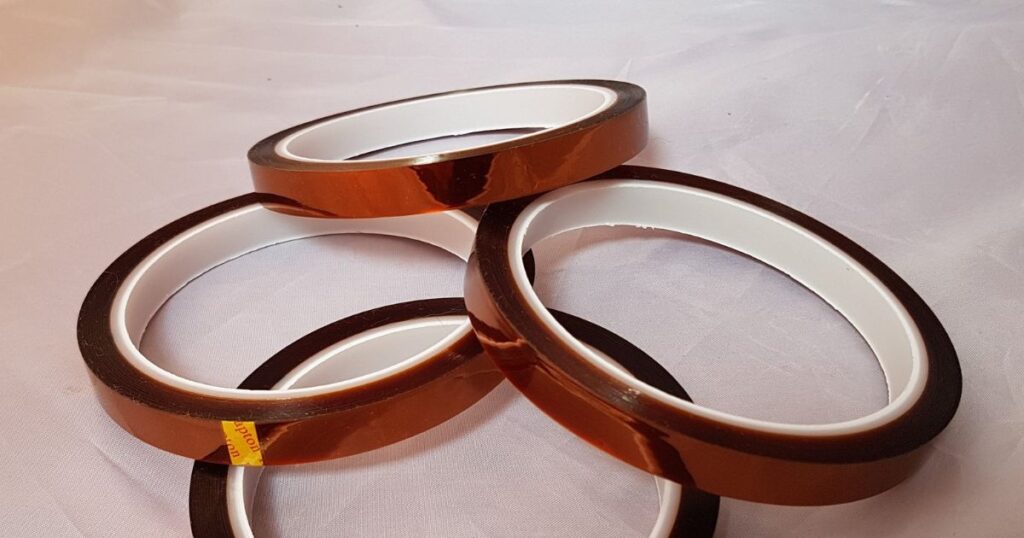
Heat tape plays a crucial role in sublimation printing by securing transfer paper onto the substrate, ensuring it remains fixed during the heat press application. This prevents any shifting, resulting in precise design transfers.
However, heat tape can occasionally leave yellow marks on printed materials, a common issue in sublimation. These marks occur when the tape’s adhesive reacts with sublimation inks, causing discoloration.
To mitigate this problem, using high-quality heat tape specifically designed for sublimation is essential. Additionally, alternative methods such as heat-resistant adhesive sprays or repositionable adhesive sheets can provide reliable options for securing transfer paper.
Addressing heat tape issues involves adjusting heat press settings, like reducing temperature or time, and ensuring the even and secure application of the tape. By taking these steps, sublimation printers can achieve better print results and avoid yellow marks caused by heat tape.
Related Post: How Long Does Sublimation Ink Last
Factors Contributing to Yellow Marks:
Now, let’s explore the reasons behind yellow marks that can appear when using heat tape in sublimation printing. Understanding these causes is crucial for minimizing their impact on the quality of your prints.
One primary cause of yellow marks is the adhesive used in the heat tape. Some adhesives contain chemicals that react with heat during sublimation, causing discoloration. Choosing heat tape with low chemical reactivity and high-temperature resistance can help prevent this issue.
Another factor contributing to yellow marks is excessive heat exposure. If the heat tape is exposed to temperatures above its recommended limit, the adhesive can degrade, leading to discoloration. It’s important to carefully monitor and control the temperature during sublimation to avoid such problems.
Improper application of heat tape can also result in yellow marks. Uneven or incorrect tape placement may expose parts of the substrate to more heat than others, causing inconsistent sublimation and potential discoloration.
Investigating Alternatives to Heat Tape for Sublimation:
The world of heat tape alternatives offers a variety of options, each with unique benefits for sublimation. Popular choices include:
High-temperature masking tape: It can endure high heat and leaves no residue, making it an excellent substitute for standard heat tape.
Reusable silicone strips: These provide a non-sticky, eco-friendly way to secure transfer paper.
Magnetic clamps: Ideal for seamless patterns, offering a strong hold without adhesives.
These alternatives cater to different needs and preferences in the sublimation process.
We will explore each of these alternatives in detail.
High-Temperature Masking Tape:
High-temperature masking tape is a standout among heat tape alternatives. This reliable tape withstands high heat without melting or leaving adhesive residue, eliminating frustrating post-sublimation cleanups!
Polyester or polyimide tapes are effective heat-resistant options that don’t melt or leave residue. They are particularly suitable for sublimation on mugs. So, when working on a mug project, consider using these tapes.
Reusable Silicone Strips:
Embrace the future of sublimation with reusable silicone strips. These strips are:
- Built to handle high temperatures
- Can endure the intense pressure and heat of sublimation without breaking down or sticking to the items
- Like the superheroes of the sublimation world, always ready for action.
The best part? These strips can be reused multiple times, making them an eco-friendly choice for regular sublimation projects. They also provide a non-sticky way to secure transfer paper, preventing residue on the final product and allowing for easy adjustment and alignment. It’s a win-win!
Magnetic Clamps and Holders:
Imagine you’re in the middle of a sublimation project, and your transfer paper slips, ruining the pattern. Frustrating, right? Enter magnetic clamps. These ‘tumbler clamps’ or ‘pinch perfect clamps’ securely hold sublimation paper during the heat press process, ensuring seamless patterns.
Magnetic clamps are like your reliable sidekick, ensuring an even and secure wrap of sublimation paper around the item. With them, you can say goodbye to seams, printing errors, and all the sublimation troubles they bring.
The Right Fit: Matching Alternative Tapes to Your Project
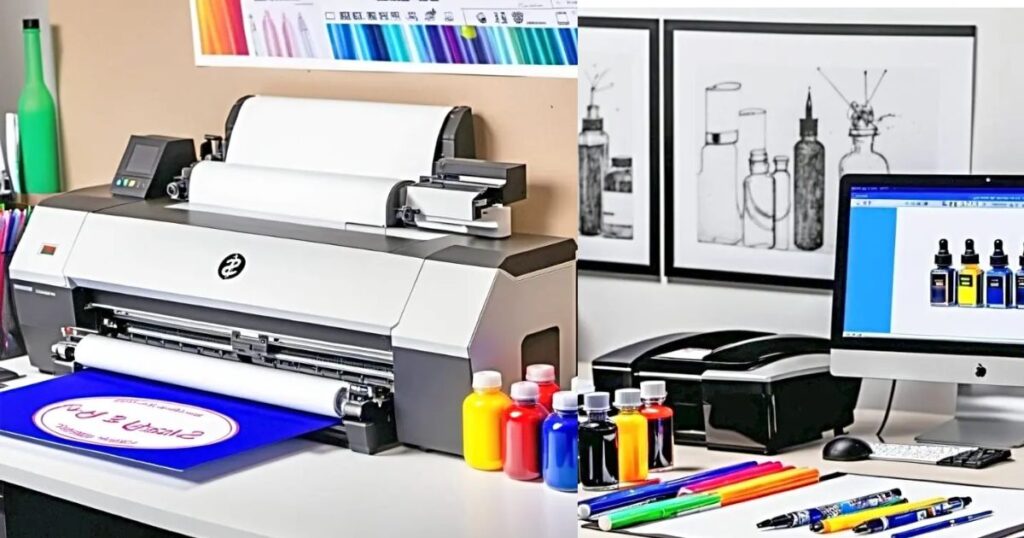
In the world of heat tape alternatives, finding the right fit for your project is crucial. Each option offers unique benefits tailored to different sublimation needs. Let’s dive into these alternatives and see how they can enhance your sublimation process.
Not all sublimation projects are the same, and neither are heat tape alternatives. Some work best for mugs and cylindrical items, while others are suited for flat surfaces and fabrics. The key is to choose the right option for your specific project.
Related Post: Best 11×17 Sublimation Printer
But How do you Decide? Here’s a Simple Guide:
For Mugs and Cylindrical Items:
For sublimating mugs and cylindrical items, less is more. Using minimal heat-resistant tape, applied only to the edges, helps avoid leaving marks on your project. Another excellent option is magnetic clamps.
Magnetic clamps ensure a flawless sublimation pattern without any seams or errors, making them perfect for cylindrical items like tumblers. If you’re concerned about sticky residue, reusable silicone strips are also a great choice—just be sure to pick the right type.
For Flat Surfaces and Fabrics:
Sublimating on flat surfaces and fabrics is a different challenge. Here, even heat distribution and pressure are crucial. Cold spots can cause incomplete image transfers, and variable pressure can distort the design. So, what’s the solution?
Heat-resistant foam pads or felt pads are your secret weapons. Placed on the bottom plate of the heat press, these pads distribute pressure evenly, which is ideal for flat surfaces like photo panels and slates. For fabrics, placing felt pads on top helps achieve uniform pressure, preventing image distortion.
Related Posts: How to Wash Sublimation Shirts?
Cost-Effective Solutions: Saving Money on Sublimation Supplies
Finding the right heat tape alternative can save you money on sublimation supplies. Let’s explore these options further to enhance your sublimation process while staying within budget.
Budgeting is crucial in sublimation projects, and saving on supplies can make a big difference. How can you reduce costs without compromising on quality? Buying non-branded tapes in bulk and using DIY adhesive solutions is the answer.
Bulk Purchasing Non-Branded Tapes:
Buying non-branded heat-resistant tapes in bulk can significantly lower expenses for frequent sublimation printing. Larger quantities, such as rolls of 100 meters or more, can lead to economies of scale, reducing the cost per unit for your projects.
Here’s the best part—non-branded tapes often match the quality of branded tapes but are more affordable. So, next time you’re shopping for heat-resistant tapes, consider non-branded options.
DIY Adhesive Solutions:
DIY adhesive solutions can be a game-changer for sublimation enthusiasts on a budget. By making a homemade paste from flour, water, and corn syrup, you can secure your sublimation paper during the transfer process without leaving any residue.
Spread the homemade adhesive thinly and evenly on the back of the transfer paper to ensure it’s applied lightly, preventing any excess that might affect the quality of the image. After the sublimation process is complete, you can gently wash off the DIY adhesive with warm water.
Budget-friendly, effective, and residue-free—what’s not to love?
Maximizing Efficiency: Streamlining Your Workflow Without Heat Tape
In sublimation, efficiency is crucial since time equals money. An optimized workflow without heat tape involves advanced preparation of materials, organized workspaces, and smart use of tools and accessories.
Let’s delve into these strategies.
Pre-Cutting and Preparation:
Pre-cutting and preparing your materials can greatly speed up the pressing stage and reduce downtime. By having your designs printed and cut to match the size of your substrates in advance, the pressing process becomes smoother and faster.
How do you secure the sublimation paper? DIY adhesive sprays are the solution. Apply them evenly and let them dry until tacky; this prevents ghosting during sublimation. Alternatively, a light application of hairspray on the back of the sublimation paper can work wonders. Knowing tricks to avoid ghosting is crucial for enthusiasts.
Organizational Tips for Accessories:
A well-organized workspace can transform your sublimation process. Having all your tools and materials within reach eliminates interruptions and the hassle of searching for supplies.
Use a rolling cart with drawers and cabinets to store your sublimation blanks. Wall storage solutions like pegboards or ink jar shelves keep your accessories and tools visible and accessible. Label your storage bins and drawers to make finding your materials and accessories easy.
Safety First: Ensuring Proper Use of Heat Tape Alternatives
By following these strategies, you can streamline your sublimation workflow, cut costs, and maintain quality without relying on heat tape.
While exploring alternatives to heat tape, safety should always be a priority. Handling high temperatures and potentially hazardous materials requires caution, but with some precautions, you can ensure a safe sublimation process.
First, avoid using materials that can’t withstand high temperatures, like standard painter’s tape or brown parcel tape. When using DIY adhesive sprays, apply a light coat to avoid complications. Always wear heat-resistant gloves when handling materials immediately after pressing to protect your hands. Additionally, keep a medical kit and fire extinguisher accessible in your workspace.
Creative Workarounds: Innovative Uses of Transfer Paper Lines and Green Tape
Creativity in sublimation extends beyond design to the process itself. Using alternatives like green high-temperature masking tape or transfer paper lines can make your sublimation tasks easier and more efficient.
Green or brown high-temperature masking tapes are perfect for sublimation transfers due to their high melting points and residue-free properties. For those who enjoy experimenting, craft-specific heat tapes by brands like Artesprix and Cricut offer robust adhesion and clean removal after sublimation.
User Experiences and Reviews: What Works According to the Community
Advice from the sublimation community can be invaluable. Their experiences with brands and innovative workarounds can guide you in choosing the best heat resistant tape for sublimation.
Some popular brands of heat-resistant tapes include:
- Artesprix
- Siser
- Cricut
- PYD Life
- Innosub
- Condi
Ultimately, the choice of heat resistant tape for sublimation depends on personal preference, compatibility with tape dispensers, and budget. While off-brand tapes might sometimes cause discoloration or damage at high temperatures, options like Duck brand shelf liner and Cricut transfer tape have become cost-effective favorites in the community.
Bottom Line:
Starting the journey into heat tape alternatives for sublimation can seem like navigating unknown waters. But with the right knowledge and tools, you can achieve smoother processes, cleaner results, and save money.
From high-temperature masking tape and reusable silicone strips to magnetic clamps, there are plenty of alternatives to explore. Match these options to your project needs, optimize your workspace, and always prioritize safety. The world of sublimation offers endless possibilities – dive in and explore!
FAQs
What Can I Use Instead of Heat-Resistant Tape?
When it comes to sublimation printing, there are several alternatives to heat-resistant tape that you can consider:
High-Temperature Masking Tape: This tape can withstand heat and leaves no residue, making it a suitable replacement for standard heat tape.
Reusable Silicone Strips: These strips offer a non-sticky, sustainable solution for securing transfer paper during sublimation. They work well for mugs and cylindrical items.
Magnetic Clamps: If you’re working with seamless patterns, magnetic clamps provide a strong hold without the need for adhesive.
Heat-Resistant Foam or Felt Pads: These are ideal for flat surfaces and fabrics. They can help secure transfer paper during the heat press process.
What Can I Use Instead of Heat Transfer Tape for Sublimation?
You can opt for parchment paper or butcher paper as alternatives to heat transfer tape for sublimation. They are effective and readily available.
Do You Have to Use Heat Tape for Sublimation?
Yes, using heat tape is essential for sublimation to secure the transfer to your substrate and prevent any shifting of designs during the heat transfer process, which could cause ghost images on your sublimation blank.
Can I Use Masking Tape for Sublimation?
No, it’s not recommended to use masking tape for sublimation as it may melt or leave residue.
What Are Some Cost-Effective Alternatives to Heat Tape?
You can save costs by using non-branded heat-resistant tapes or DIY adhesive solutions instead of heat tape.
Can I Reuse Silicone Strips for Sublimation Tasks?
Yes, silicone strips can be reused multiple times for sublimation tasks as they are designed to withstand high heat and are a sustainable choice.
Last Updated on August 12, 2024 by Muhammad Haseeb


